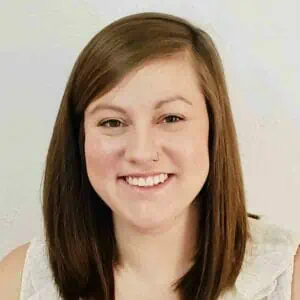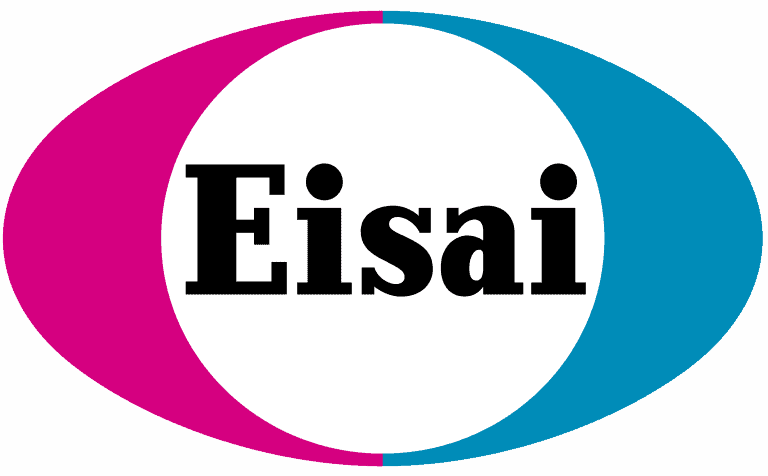DSF held the 14th annual Research Roundtable on the evening of Thursday, November 30, 2023. The initial DSF Research Roundtable was held in 2010, and was truly a small gathering of founding families with a handful of researchers and clinicians familiar with Dravet syndrome. They sought to understand the current state of research and to identify key barriers to advancing the field towards improved therapies. Through the years, the Research Roundtable has continued to guide DSF is establishing and updating a Research Roadmap with yearly priorities that help direct where DSF should strategically invest in research to fill existing gaps in knowledge. In 2023, the audience has grown significantly to include over 170 attendees comprised of academic scientists, clinician researchers, geneticists, neurologists and other health care professionals, government representatives, and members of biotech and pharma companies that develop and manufacture therapeutics for Dravet syndrome. Each year, DSF announces grant awards to begin the evening, followed by a robust scientific program that often includes presentations from prior year grant awardees, and then the night concludes with discussion of the newest advancements in the field as well as the existing barriers to progress. This year’s event included the announcement of funding for eight research grants totaling $2.475 million; DSF’s largest yearly funding amount to-date bringing the total amount DSF has directed to research to over $9 million. The program that followed was a continued celebration of DSF-led research, including clinical studies supported by DSF-partnership and patient-community participation and updates from three research projects previously funded by DSF. Read on to learn more about the evening.
DSF Board President, Ted Odlaug, PhD preceded the scientific program by speaking about the journey of his granddaughter, Anna, who has Dravet syndrome. Dr. Odlaug emphasized the difficult trial-and-error approach to medication and therapy selection that Anna has had to endure, often experiencing breakthrough seizures and hospitalizations. While there have been advancements in the therapies that are available as well as a consensus on top-line treatments for Dravet syndrome, similar to Anna, many patient-families and their health care teams must still go through several iterations of failed medications or therapeutic combinations to achieve acceptable seizure control. While the hope for the future is to have targeted therapeutics that effectively treat seizures as well as the other symptoms of Dravet syndrome, Dr. Odlaug underlined the need for improved treatment algorithms in the short-term that could allow for more directed, personalized treatment plans.
Joseph Sullivan, MD from the University of California San Francisco began the scientific program by presenting the most recent updates to characterizing the natural history of Dravet syndrome. A natural history study is an observational study that seeks to track the course and outcomes of a disease. Dr. Sullivan emphasized the importance of natural history studies not only to improve the clinical understanding of Dravet but also to inform clinical studies investigating novel therapeutics. In fact, the FDA strongly encourages the investigation of natural history data prior to clinical trials for investigational therapies as natural history studies can direct the selection of clinical endpoints and may be able to provide external control data for interventional studies that could supplement placebo arms. For Dravet syndrome, understanding the natural history has helped to emphasize the complexity of this rare disease beyond the difficult to treat seizures to include the full spectrum of symptoms impacting patients. Dr. Sullivan recapped data from 3 examples of such efforts in Dravet syndrome. The first was a recent publication (Makiello et al, 2023 Epilepsia) from a 10-year follow-up study of 68 patients with Dravet syndrome that focused on predictors of quality-of-life related outcomes. They found that quality of life was greatly impacted by epilepsy severity and behavioral symptoms, consistent with what is often prioritized as a concern for families. Dr. Sullivan also presented data from two prospective studies sponsored by Stoke Therapeutics, the BUTTERFLY Study, and Encoded Therapeutics, the ENVISION Study. The BUTTERFLY study collected data on 36 patients with Dravet syndrome from ages 2 to 18 years, and the ENVISION Study collected data on 58 patients from 5 months to 5 years. These studies used standardized assessments to collect information on developmental domains related to behavior, communication, and motor skills and the data between the two studies showed consistent results that many of these deficits in development occur early, although some measures like communication and fine motor function may not show declines but rather plateau while age-matched peers may still be gaining in skills that further widen the gap. Other measures, such as behavior and gross motor skills, are more likely to decline over time. From these two studies, no correlations have been found between developmental outcomes and seizure onset, seizure burden, or medication paradigms. The goal is that with this more detailed characterization of the outcomes in Dravet syndrome we will be able to show that future targeted therapies can change the natural history of the disease course for patients.
The next talk of the evening came from 2020 DSF Grant Awardee Cameron S. Metcalf, PhD of the University of Utah. Dr. Metcalf presented on his laboratory’s exploration of mechanisms that may contribute to sudden death in a mouse model of Dravet syndrome. Sudden Unexpected Death in Epilepsy (SUDEP) is a major risk for patients with Dravet syndrome, and SUDEP has been linked to both respiratory and cardiac dysfunction, often, but not always following a seizure event. Dr. Metcalf has been investigating respiratory activity in a mouse model of Dravet syndrome, probing changes in breathing at rest and following a seizure, characterizing structural and molecular changes in lung architecture, as well as in relevant brain regions that control respiration. While his lab initially set out to look at inflammation that may be involved in these processes, the investigations have led to new directions and novel questions that they continue to investigate related to breathing, SUDEP, and Dravet syndrome. They are currently continuing to investigate how their findings may change across development and the potential role of energy metabolism in these processes.
Anna G. Figueroa, BS, a PharmD Candidate from the laboratory of Manisha Patel, PhD at the University of Colorado Anschutz Medical Campus gave an update on a grant awarded to Dr. Patel and co-investigator Dr. Kelly Knupp in 2021. Metabolic dysfunction has been identified in models of Dravet syndrome as well as in patient samples, and the success of the ketogenic diet as a therapy has additionally underlined the importance of investigating metabolism as a potential therapeutic target. Their project involved establishment of lymphoblast cell lines (LCLs) from patients with Dravet syndrome and subsequent analysis for changes in metabolic function. Despite being a peripheral blood cell, metabolic changes deficits indicating impaired mitochondrial function could be detected between patients and controls and some preliminary work also suggested that some changes could also be correlated with medications patients were utilizing. They are still expanding the number of cell lines they have investigated and also following up on new lines of inquiry that have emerged after some additional projects investigating gene expression changes in the same cell lines. More about this line of work was presented at AES Poster Abstract #1.114 and #3.017.
The final scientific talk of the evening was from Moran Rubenstein, PhD of the University of Tel Aviv presenting on the DSF-funded collaborative work with Eric J. Kremer, PhD of Institut de Génétique Moléculaire de Montpellier examining viral-mediated expression of the SCN1A-encoded sodium channel, Nav1.1, as a genetic therapy in a mouse model of Dravet syndrome. One of the barriers to a straightforward gene-replacement therapy for Dravet syndrome is the large size of the SCN1A gene, which outsizes any of the currently utilized delivery vectors for human genetic therapies. They tested a large canine adenovirus vector (CAV) as a solution given its large size capacity, ability to target neurons, reduced immunogenicity, and long-term expression following injection. They showed that this vector could effectively deliver SCN1A to relevant regions of the brain, and that, even with limited numbers of targeted cells, they could greatly improve survival and reduce susceptibility to seizures both when intervening at seizure onset as well as at later developmental stages. They additionally saw improvements in some behavioral tasks following treatments, suggesting this could approach could modify the disease course. Dr. Rubenstein and Dr. Kremer have published their work and are continuing to investigate more about the cell types that are most important to target with this approach, the developmental windows for treatment, and the efficacy. You can read more about their published work on this this topic here.
Bookending the scientific program, Dr. Odlaug began the discussion portion of the evening by again reflecting on his granddaughter Anna’s uncertain journey through a list of medication combinations, asking the audience how this trial-and-error approach might be improved for patients with Dravet syndrome. A variety of efforts are underway that will hopefully move the needle on treatment, beyond the development of novel therapies. DSF just announced funding for a $1 million grant to Ingo Helbig, MD and Ethan M. Goldberg, MD, PhD at The Children’s Hospital of Philadelphia (CHOP) to analyze large datasets from whole genome sequencing paired with clinical data. Probing the information gathered in these datasets may be able to reveal novel insights into groups of patients that have unique clinical features or responses to medications. Additionally, there remains interest in the further development of cellular models that could optimally utilize patient-derived cells to answer questions about therapeutic impacts. This could involve the further advancement of induced pluripotent stem cell (iPSC)-derived neuronal cultures, as well as the investigation of other cellular models, such as the LCL studies presented by Anna Figueroa from the Patel lab during the evening’s scientific program. Animal models have also been incredibly important for drug discovery, and researchers at the University of Utah are working on teasing apart polytherapy approaches in a mouse model of Dravet syndrome (Presented by Jeffrey Mensah, MS -AES Poster Abstract #3.104). Lastly, the audience discussed the importance of data sharing and seeking ways to be more open in this arena, particularly with existing silos of clinical data.
The evening’s discussion brought forth a few key themes. Science has made some tremendous advancements, but the needle has still not moved enough on patient outcomes. Hopefully, we are beginning to see the payoff of the technological advancements as genetic based therapies are reaching human clinical trials for Dravet syndrome. The community should continue to invest significant time and resources into the development of therapies that hold the potential to be disease modifying. However, in addition to investing in next-generation therapeutic development, there are still some holes that exist in our basic science knowledge and research toolkit that require attention. Sometimes, this may mean taking a step back to basics, supporting the development of science tools that can further tease apart the neurobiology related to the onset and progression of Dravet syndrome. While these studies may be initially more removed from impact on clinical outcomes, they will ensure that the next generation of therapies can be increasingly more precise in their design and application.






